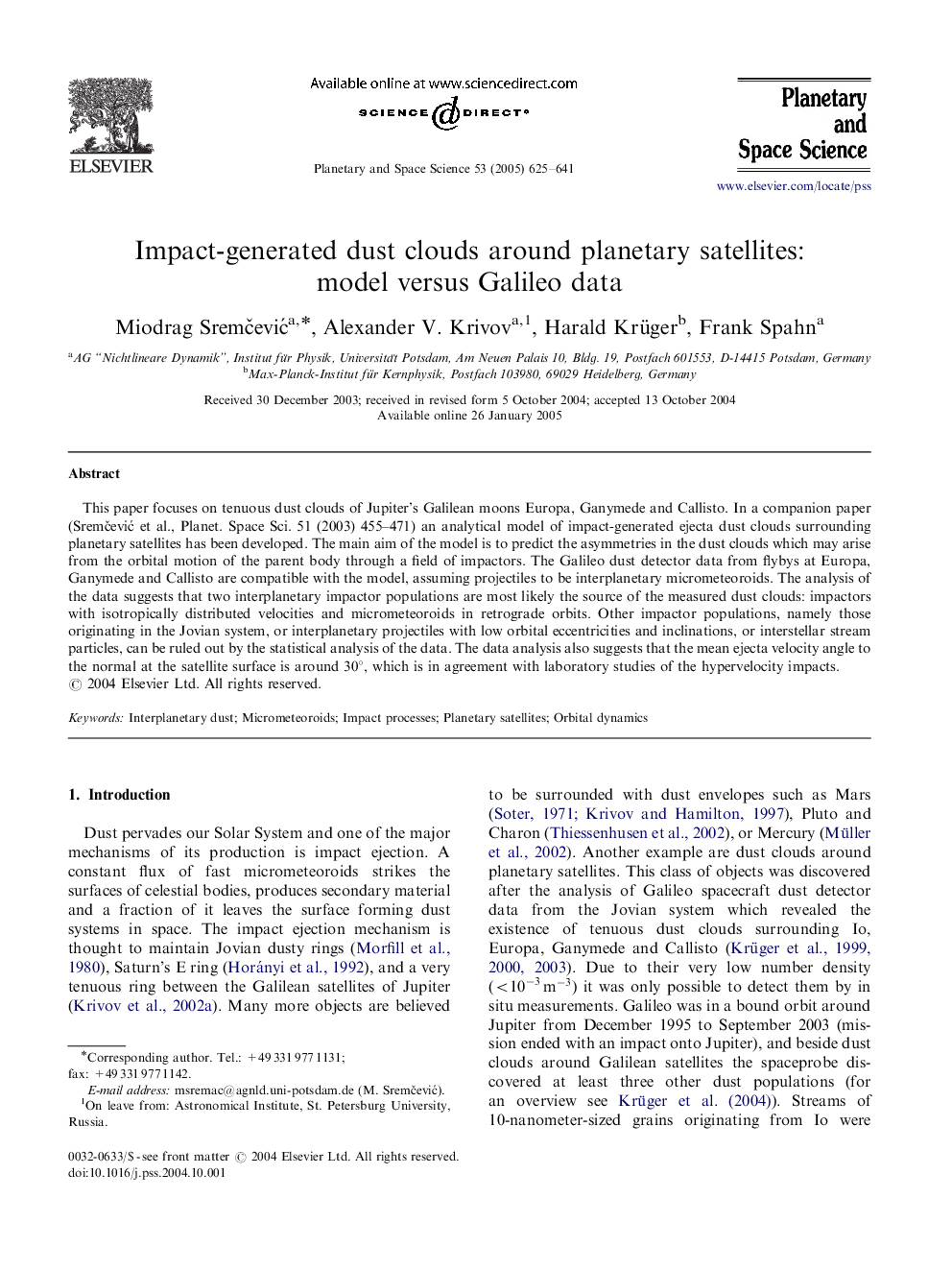| Article ID | Journal | Published Year | Pages | File Type |
|---|---|---|---|---|
| 10705634 | Planetary and Space Science | 2005 | 17 Pages |
Abstract
This paper focuses on tenuous dust clouds of Jupiter's Galilean moons Europa, Ganymede and Callisto. In a companion paper (SremÄeviÄ et al., Planet. Space Sci. 51 (2003) 455-471) an analytical model of impact-generated ejecta dust clouds surrounding planetary satellites has been developed. The main aim of the model is to predict the asymmetries in the dust clouds which may arise from the orbital motion of the parent body through a field of impactors. The Galileo dust detector data from flybys at Europa, Ganymede and Callisto are compatible with the model, assuming projectiles to be interplanetary micrometeoroids. The analysis of the data suggests that two interplanetary impactor populations are most likely the source of the measured dust clouds: impactors with isotropically distributed velocities and micrometeoroids in retrograde orbits. Other impactor populations, namely those originating in the Jovian system, or interplanetary projectiles with low orbital eccentricities and inclinations, or interstellar stream particles, can be ruled out by the statistical analysis of the data. The data analysis also suggests that the mean ejecta velocity angle to the normal at the satellite surface is around 30°, which is in agreement with laboratory studies of the hypervelocity impacts.
Related Topics
Physical Sciences and Engineering
Earth and Planetary Sciences
Geophysics
Authors
Miodrag SremÄeviÄ, Alexander V. Krivov, Harald Krüger, Frank Spahn,
